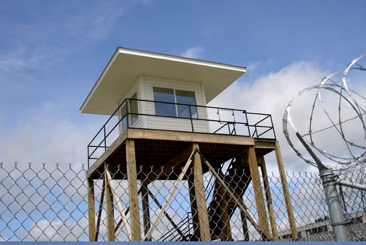|
|
| Building the Perfect Villain |
| By Joe Bouchard |
| Published: 01/15/2018 |
 The following is an installment in "Icebreakers 101: Hello, My Name is Problem", a series featuring "Ice Breaker's" designed to promote training awareness and capabilities in the corrections industry.
The following is an installment in "Icebreakers 101: Hello, My Name is Problem", a series featuring "Ice Breaker's" designed to promote training awareness and capabilities in the corrections industry.
Some dangers are very easy to spot. For example, when you see an out of control truck careening towards you on an icy highway, that is an obvious hazard. Also, the chilling appearance of a shank sends chills through corrections professionals in all circumstances. Sometimes, the unseen and unlikely perils are the most dangerous because they were unexpected. Staff division in corrections is dangerous. When staff are pitted against staff, prisoners have an opportunity to leverage favors and initiate manipulation schemes. Focused on an imagined enemy or bona fide villain co-worker, staff are less likely to keep as professional as necessary to fulfill the mission of the agency. And that mission is to protect staff, offenders and the public. A villain will not necessarily announce herself or himself. They are not heralded by a black hat, a villain badge or a sinister goatee. In fact, many antagonists have camouflage skills. It is in the negative actions that villains commit that they eventually are unmasked. Still, corrections staff are an observant group. And this is a simple exercise. It is built on discussion and requires only a white board and a marker. Walk the participants through these steps.
Have you ever seen the Saturday Night Live sketch that featured Sean Connery in Celebrity Jeopardy? Connery, as portrayed by Darryl Hammond, takes delight in harassing a straight-faced Will Ferrell in the Role of Jeopardy’s host Alex Trebek. The funny, subtle part of this is that Connery treats Trebek as a bitter enemy and there is no apparent reason for that. That is just a skit. However, in any setting, there is a serious side to the nemesis issue. Sometimes, we see colleagues who serve as their own worst enemy. You may know a colleague who has to have at least one staff nemesis at a time. They seem to create their own problem in a person. It is not merely distasteful and immature. And it is not without collateral damage, Staff on the side lines will detect how the person who seeks a scapegoat treats colleagues. This will lead to a widespread distrust of that person. While that person labors to create a pariah, he or she may become one due to those actions. The inevitable loss of credibility hard to rebuild. In addition, supervisors become confused and may issue misplaced discipline. Lest we forget, most offenders watch all staff moves and analyze them. The first product of the invented nemesis is prisoners laughing over this and losing respect for staff. It may be just an entertaining diversion for them. However, this could lead to staff division and various schemes and perils that come from it. This adds to the inherent tension of our jobs. Cumulative stress chips away at positive attitudes and buttresses our ability to commit errors, lowering the life expectancy of our careers. If you see any of these behaviors in a colleague or yourself, you may wish to intervene within the level of comfort that the professional relationship affords. Did the nemesis maker do the following?
Let’s not forget corrections, our chosen vocation. Like most jobs, there is oversight from many directions. In addition, corrections features some of the most dangerous and difficult clients to deal with. And while we know of the many problems that exist, we sometimes add fuel to the fire by creating our own challenging issues. It is difficult enough to deal with our many real problems in corrections. It is a tragedy when paranoia takes over and allows for phantom problems to cause anxiety. Certainly, we should be vigilant, but not to the point of ‘detecting’ sinister figures around every corner. Those who need to adopt a nemesis do not create a small, two-person problem. In fact, it can spread to a dangerous, facility-wide grudge. Corrections has no place for manufactured nemeses. Joe Bouchard is a Librarian employed with the Michigan Department of Corrections and a collaborator with The International Association of Correctional Training Personnel (IACTP). He is also the author of “IACTP’s Corrections Icebreakers: The Bouchard 101, 2014” and "Operation Icebreakers: Shooting for Excellence" among others. The installments in this series include his opinions. The agency for which he works is not in any way responsible for the content or accuracy of this material, and the views are those of the contributor and not necessarily those of the agency. While some material is influenced by other works, all of the icebreakers have been developed by Joe Bouchard. Visit the Joe Bouchard page Other articles by Bouchard: |
Comments:
Login to let us know what you think
MARKETPLACE search vendors | advanced search

IN CASE YOU MISSED IT
|


How have your spirits been while under quarantine for COVID-19? We are hopefully halfway through this pandemic’s impact on our economy. It has been a difficult road for us all. It has taught us about our better-and worse-natures. Hamilton Lindley explains how it has impacted his family and work life balance in this latest blog article about how to invest time that we’ve been given to make ourselves better than when we began.
If you are searching for relevant images of Hamilton Lindley then this is the link to find them.
Thank you for sharing the post, that's a nice topic. instagram hashtags